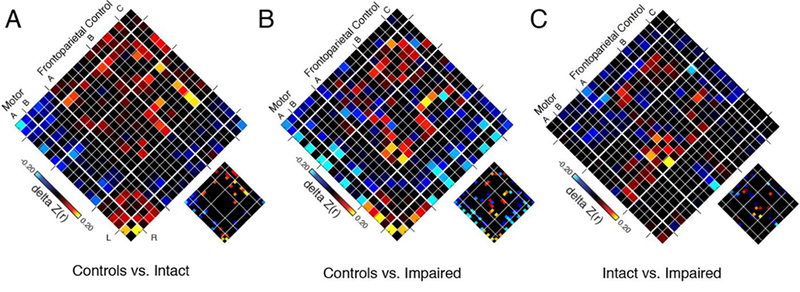Figure 2. Effects of Patient Status and Cognition on Functional Connectivity in Frontoparietal Control and Motor Networks.

Each panel shows a 19×19 adjacency matrix corresponding to group differences in interregional connectivity among nodes of the frontoparietal control and motor networks based on (A) diagnosis alone, (B) diagnosis and cognition, and (C) cognition alone. Specifically, leftmost panel (A) shows the difference in connectivity (delta Z[r]) when comparing Intact patients (n=47) to Control participants (n=31), with hotter colors representing interactions that were lower in patients than controls. Middle panel (B) shows differences in connectivity comparing globally Impaired patients (n=48) with Controls (n=31), with hotter colors representing interactions that were lower in patients than Controls. Rightmost panel (C) shows connectivity differences when comparing Intact (n=47) and Impaired (n=48) patients, with hotter colors representing interactions that were lower in more impaired patients. Large matrices show unthresholded maps; sub-images show false discovery rate-thresholded significant effects (FDR, q<0.05). Left and right hemisphere nodes are shown on left and right sides of each diamond, respectively to highlight the symmetry of the findings; within-network interactions are shown along the central diagonal. The FPN subnetwork A includes 7 regions: intraparietal sulcus (IPS), lateral anterior prefrontal cortex (PFCla), posterior temporal, dorsal prefrontal cortex (PFCd), cingulate, medial posterior prefrontal cortex (PFCmp), and orbitofrontal cortex (OFC). The FPN subnetwork B includes 5 regions: lateral posterior prefrontal cortex (PFClp), lateral anterior prefrontal cortex (PFCla), inferior parietal lobule (IPL), temporal, and PFCmp. The FPN subnetwork C includes 2 regions: precuneus and the cingulate gyrus C component. The motor network includes 2 subnetworks: A (2 regions) and B (4 regions).
